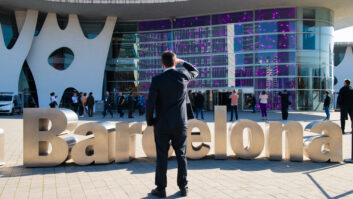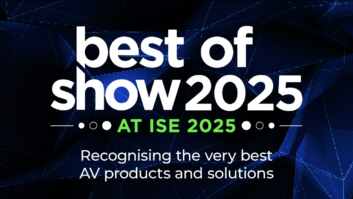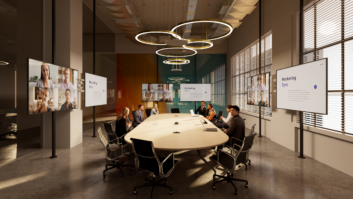Systems integration has always been about bringing together different elements of an installation to create a complete system in which everything works together. This might be a blindingly obvious statement but, in reality, it is only now that it is becoming entirely accurate. In the past there was very often a systems integrator for each specialised aspect of a project, including electrics, telephony/communications, lighting, audio and video, but, today, these components are the responsibility of a single contactor.
While specialists may be brought in for some elements of the build, in general – and for the audio-visual market in particular – there is the growing trend for one contractor to handle all aspects as part of either a managed services or an AV as a Service (AVaaS) arrangement. This change in how the systems integration market operates will be examined in a new survey by Futuresource, published in October.
The report’s author, Chris Pennell, comments that as the AV industry itself has developed and changed in the last ten to 20 years, so too has the focus of systems integration companies. “Historically, when Futuresource has looked at the pro AV sector it has been displays, audio, pro cameras and other devices,” he comments. “But [now] my team has been looking at the emerging sectors, such as the shift from proprietary solutions to IP-based systems and the emergence of managed services and AVaaS.”
Pennell, who is principal analyst of the connectivity and services practise within Futuresource, was not able to give exact details of the report’s contents but he did reveal it will look at who the key systems integrators are, the total size of the market, significant trends and main vendors.
DIFFERENT CHALLENGES
“The integration sector has faced different challenges over the last three years,” he says. “One of the questions we’ve been asking is that now we’ve come through Covid, what are clients and enterprises asking of systems integrators? A lot are picking up where they were before. The projects that were put on hold for schools or enterprises are being picked up again, which is a good sign. It means the money is still there and flowing.
Pennell acknowledges there are new challenges and opportunities for systems integrators, particularly through the AVaaS sector and the parallel emergence of devices as a service. “People have been talking about this for some time now and we are now starting to see interest in it,” he explains. “The core business [of installation] is still there and that’s quite strong but the good thing is we are beginning to see awareness of these emerging sectors and products.”
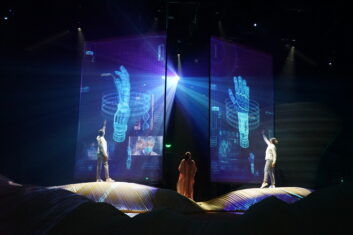
The “emerging sectors” Pennell identifies illustrate, he says, a move away from legacy and proprietary solutions in favour of networking. “Traditional AV networks have been point-to-point. Now there’s a whole shift towards IP networks, which opens up a whole host of opportunities for integrators. It’s not just about designing and implementing an installation to hand over to the client. Now it’s all about how the installation is managed going forward.”
This is where AV managed services and AVaaS, which Pennell views as two distinct areas, come into play. “AV managed services are where an integrator has responsibility for day-to-day management of the end points,” he comments. “As a service is much broader than that. It might include an element of device management but can also include the hardware side, such as ‘device as a service’, the infrastructure and then you’ve got the applications on top of that. This includes virtual production tools, shifting those into the cloud and providing ‘production anywhere’, bringing in different content sources for live events.”
Integrators, both the big groups and smaller, mid-sized companies, are now offering either managed services or AVaaS – or both. “There are definitely two areas,” acknowledges Rob Benton, sales director at Kinly. “AVaaS could be ‘AV as a Service’ or ‘Event as a Service’, which is delivered to a client globally and being purchased or consumed as a service. But AVaaS, when talking about project integration, is a totally different ball game.”
At the moment Benton views AVaaS for integrators as being in its infancy, largely due to the scale of some of the projects being faced. “Meeting room deployment with simple, standardised technology and minimal standard components is quite easy to wrap up as a service,” he explains. “You might have only five components and there might 500 of them globally or 50 regionally. That’s quite easy to wrap up into an as a service model. But when you’re talking about complex spaces such as auditoriums, reception and client-facing rooms and signage, that’s not so easy. They’re made up of multiple technology components and the life span is typically going to be longer than a standard meeting space. People are spending millions on their auditorium spaces and to wrap that up as a full service is not really something we’ve seen nor has a customer strongly focused a commercial model around that just yet.”
Making the distinction between “financing hardware” and “buying hardware and a solution as a service”, Benton says the trend is still more towards purchasing equipment and then buying professional services to run it from integrators as a capital expenditure. “‘As a service’ is like a subscription service,” Benton clarifies. “Everybody’s talking about it but it’s still very early days and, in reality, there’s not a huge amount going on in that space.”
MANAGED SERVICES
By contrast, he adds, ‘managed services’ are something that integrators have delivered since the first days of this sector. “Maintenance and support are part of AV DNA,” he explains. “Managed services – delivering events for clients as a service on a global scale – is a huge, core part of Kinly’s business. These are made up of hundreds of individual globally all based in their own offices, specialist environments, auditoriums or studios and we deliver consistent event and production services to every business user and stakeholder within that organisation in a standardised model, completely linked together on a global basis as a full service wrap.”
Other integrators are seeing a shift towards AVaaS, with clients also attracted to it by not having the burden of a substantial capital outlay all in one go. “AVaaS offers a subscription-based approach to accessing AV solutions,” comments Steve Clarke, technical director at ITSL Group.
“Instead of purchasing equipment outright, you pay a monthly fee to use or access the necessary equipment and services. This model doesn’t lead to ownership but ensures you have the latest technology at your fingertips, offering flexibility as your requirements evolve. With technology advancing swiftly and the constant need for updates, many organisations are favouring AVaaS to maintain agility and a competitive edge in the market.”
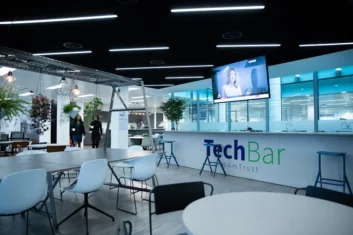 Brad Sousa, chief technology officer of another of the big integrators, AVI Systems, observes that modern AV integration and – perhaps more important – how it is managed after the initial sale and installation, needs to be viewed in an entirely different way by suppliers and clients alike.
Brad Sousa, chief technology officer of another of the big integrators, AVI Systems, observes that modern AV integration and – perhaps more important – how it is managed after the initial sale and installation, needs to be viewed in an entirely different way by suppliers and clients alike.
“When we think of as a service, what most people are imagining is that instead of paying up front and then paying monthly increments for a conference room, for example, it becomes a service,” he says. “We don’t think of it in that context: we think of it as a subscription. As a service is sometimes a euphemism for a lease and many customers are less interested or excited in this because they have their own funding vehicles and in many countries that lease does not afford them any significant [financial or commercial] advantage.”
Today, in both the consumer and business worlds, there is the expectation of getting more support or something that is tailored specifically to a customer’s specific requirements. Sousa comments that to offer this in the form of a conference room install, AVI came up with a subscription that has no termination clause.
“You pay an activation fee and then a monthly fee, which delivers a conference room for as long as someone wants it,” he explains. “When you’re done with it, we come and pick it up and either take it back or re-deploy it for you. That’s a very different kind of model, which we find is intriguing for our customers because, instead of them going through a process of evaluating a design and hoping it satisfies what they expect, the whole risk is on us. If users do not use it, they’re giving it back. It’s totally focused on delivering an experience that is consistent with what the user expects it to be.”
Allied to this, but regarded by integrators as a different aspect of what they are now offering customers, is managed services. Carrying on the example of conference rooms, which he says is a “common denominator” area that people can relate to, Sousa comments that having more management of an installation is imperative in the post-Covid business world.
“Pre-pandemic,” he says, “we as a supplier might have been doing periodic checks on a conference room system to ensure it was functioning in the way it supposed to but more often than not, a user would walk into that facility and they would be the first to discover that something was not working. Post-pandemic, our customers want us to manage that conference room like they manage their laptops. They want to ensure we know there is a problem in that room before there is one and either resolve it or resolve it before they tell you there’s a problem. And then update them on what was done to keep the room in service.
ONGOING RELATIONSHIPS
Another way of looking at this, as Adam Corrie, technical director of Engage Works, points out is as maintaining an on-going relationship with clients. “That doesn’t necessarily mean a project is constantly evolving or updated,” he says. “It’s a finished product and we review it maybe 12 months later to see if there are any upgrades or improvements we can bring to the system. Having a master service agreement means we do have on-going dialogues with all – or most – of our customers.”
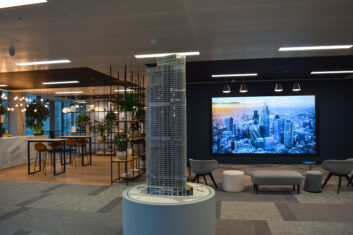 Among Engage Works’ clients are what Corrie describes as “most of London’s big consultancies”, for which the company builds “large innovation centres”. In many cases, he explains, engineering teams from Engage Works are seconded to run and manage these facilities so the users are able to get the most value out of the system.
Among Engage Works’ clients are what Corrie describes as “most of London’s big consultancies”, for which the company builds “large innovation centres”. In many cases, he explains, engineering teams from Engage Works are seconded to run and manage these facilities so the users are able to get the most value out of the system.
“A large organisation may have its own in-house IT department and very specific ways of working when it comes to running meetings,” Corrie says. “By us having somebody who is effectively bridging that gap means we have a constant dialogue between our engineering R&D and someone based at the client’s site. This means we can get ahead of problems or adapt to a new system or policy enacted by IT that is blocking a service. This is something we can do quickly instead of the installation not working or becoming obsolete.”
TATESIDE LAUNCH
In July this year, Tateside AV announced the launch of a managed services division that offers AVaaS to businesses across the various sectors in which it works. This includes supplying a range of technical systems, including video conferencing, large-scale LED walls, meeting room technology, sound rigs and network equipment.
Technical director Jack Cornish explains that the new department has come about in response to client requests. “Most of our decisions are driven by clients,” he says, “which helps us keep on top of curves and trends. We saw an uptake of companies doing everything on managed services, which is a model of using Opex [operational expenditure] instead of Capex [capital expenditure] to work with their budgets. It’s a natural evolution of providing a service and hardware, wrapping everything up in one blanket so we can do the kit procurement and the installation plus ongoing maintenance.”
In business terms, Cornish observes, companies – like individuals – prefer to have predictable costs as opposed to unexpected ones. And while a subscription can provide that kind of certainty, there has to be more around the offering than just regular billing. “There’s a lot of perceived bad value in subscriptions,” he says. “It shouldn’t just be about collecting a bill, it should be what you can add on top. Adding value makes for a better customer experience. As an industry we need to be more proactive and show good value. What that allows us to do is have monthly catch-ups, remote diagnostics and reporting back to clients, all of which gives value back to clients. The managed service is the service we can provide and guarantee on it.”
While the traditional, nuts and bolts. of AV systems integration – sound, projection, lighting and video systems – remain a key part of the business, there is now also the major influence of IT technology, notably IP networking, to consider as well. This has significantly altered both the job of the systems integrator and the kind of projects being undertaken.
“The role of the AV integrator is now more akin to that of the IT integrator,” observes Pennell. “We’re not talking about putting AV on the IT network – they are still separate networks – but we do see a shift towards using IP switches to replace matrix switching. AV integrators also need to understand certain areas of IT better, such as security, data and working on the basis of outcome-based projects.”
Adam Corrie comments that while Engage Works – and other systems integrators – have always existed in specific AV niches, it does not mean they are not moving out into other areas. “We don’t just do design or engineering or integration or software and content development,” he says. “We do all of the above. That means we can be turnkey and do more interesting R&D or content design. We can keep as much or as little of that in-house and scale according to a project.”
PRODUCTION MANAGEMENT
In some respects, systems integrators are now as much involved in production management as they are technology and installation management. Rob Benton acknowledges this additional responsibility, explaining there are two sides to the group’s business covering both the “hard core AV integration of technology and hardware” and the managed service. “Where customers work on a large scale, you need to have both,” he states. “We’re integrating communication tools, video conferencing, cloud video solutions and collaboration platforms. Unified communications is what we’re doing and it’s more IT ecosystems than ever before, with pretty much most AV technology sitting on an IP network.”
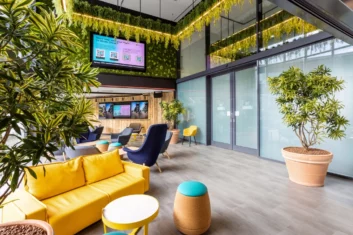 At ITSL Group, Steve Clarke comments that during lockdown the company focused on “broadening our expertise”, which put it in a good position once the worst of the pandemic was over. “But our role remains rooted in technological advancement and guiding clients to their ideal solutions,” he says. “More clients are recognising the value of investing in AVIP hardware due to its compatibility with existing systems, [which can provide] efficiency and scalability.”
At ITSL Group, Steve Clarke comments that during lockdown the company focused on “broadening our expertise”, which put it in a good position once the worst of the pandemic was over. “But our role remains rooted in technological advancement and guiding clients to their ideal solutions,” he says. “More clients are recognising the value of investing in AVIP hardware due to its compatibility with existing systems, [which can provide] efficiency and scalability.”
Sousa sees the change as being that most systems integrators are now “solutions focused” rather than “installation focused”. Connected to this is less attention being paid to the technology by the end-user. “While what is being used is vitally important to us, it is less important to the customer,” he explains. “This is because they’re asking us to solve a problem. They’re asking us for an outcome, not just a system.”
Although Jack Cornish of Tateside is from the younger generation of AV professionals, he too has witnessed a considerable transformation of systems integration over just the last 15 years. “I’ve seen everything change in regards to how projects are run, the speed of projects and the kind of requests you have to work to,” he says. “The margins have also depreciated over time and therefore we have to be adaptable and make sure our professional services are where they need to be. This involves having more in-house services, such as CAD and programming, so we can offer turnkey solutions and are not sub-contracting anything out.”
The AV sector itself has evolved considerably over the last 20 years and systems integration has been a significant part of that evolution. The changes are by no means complete though, and systems integrators seem to be enjoying being at the edge of the curve.


